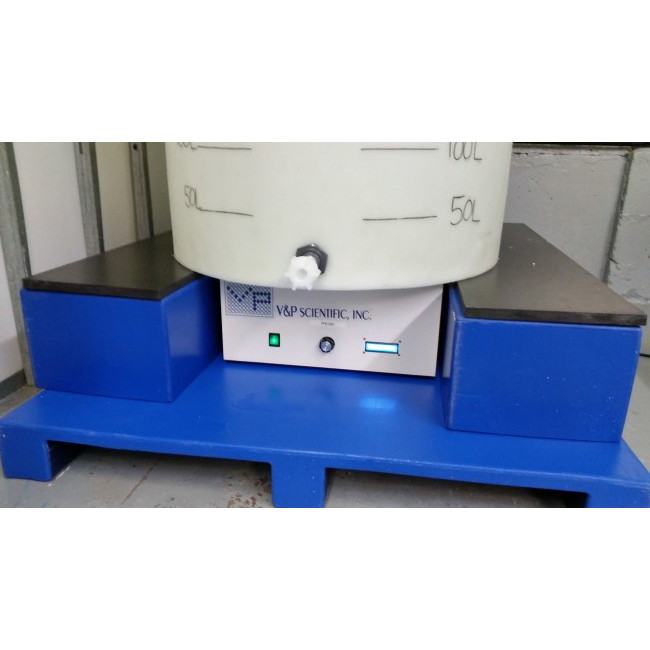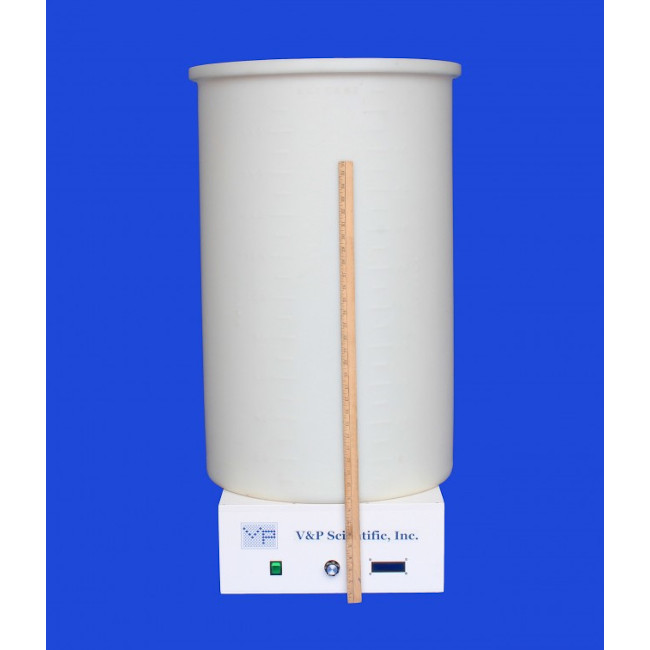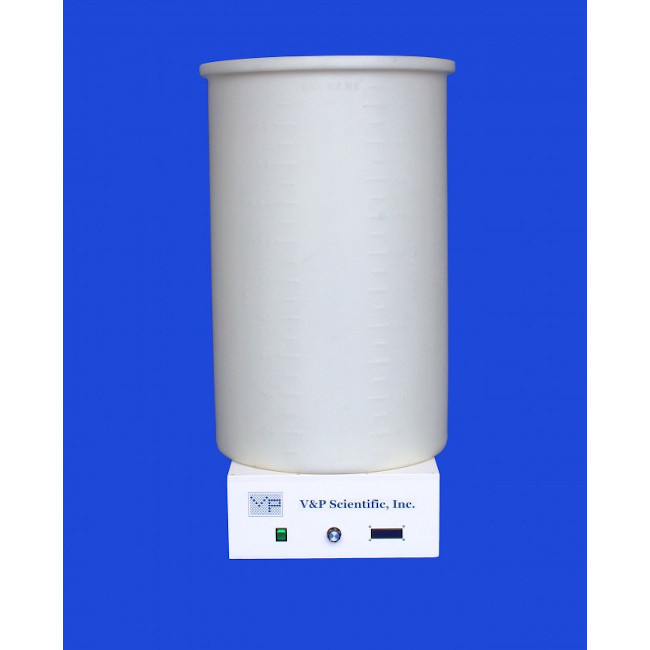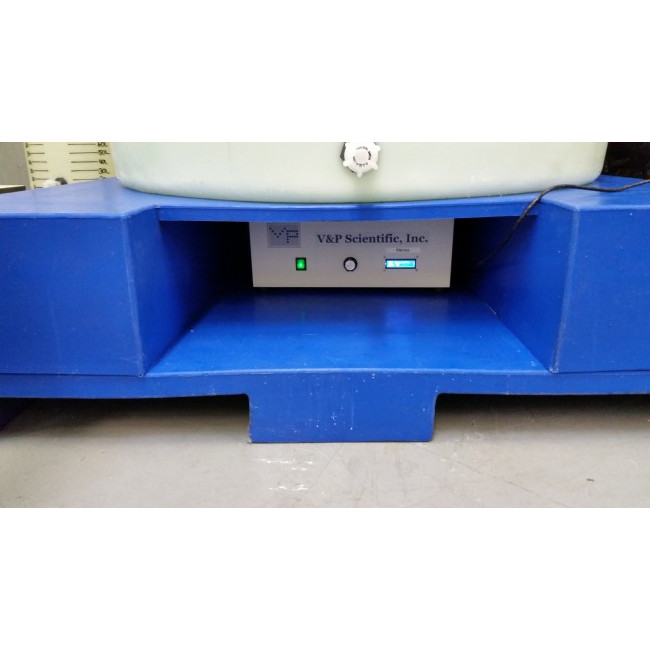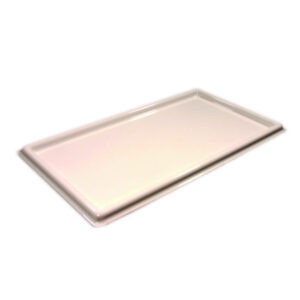.
Conventional Horizontal Magnetic Stirrers
The conventional horizontal Magnetic Stirrer technology has been around since 1944. This system uses a motor to spin a drive magnet whose moving magnetic field connects with the magnetic field of a stir bar causing the stir bar to spin on a horizontal plane in a vessel above the drive magnet. V&P Scientific has improved that basic system.
.
Secrets Behind V&P Scientific's Stirrus Technology:
- # The drive magnets in the V&P Scientific Stirrus machines use very large and very powerful (48 MGO) NdFeB rare earth magnets. These are much physically larger and more powerful than the Alnico magnets (8 MGO) used in conventional horizontal stirrers.
- .
- # This means that V&P Scientific Stirrus machines project their magnetic field farther and form a stronger attachment to the Stir elements thus allowing them to stir very viscous solutions.
- .
- # V&P Scientific stir elements are made with powerful (48 to 52 MGO) NdFeB Rare Earth magnets and V&P is the only company to offer a full line of NdFeB stir elements to accommodate every vessel size.
- .
- # V&P is also the only source for 48 and 52 MGO NdFeB Stir elements.
- .
- # The extremely strong magnetic coupling/attraction between the V&P Scientific Stirrus drive magnet and the stir element, enables stirring at high speed and in a viscous material.
- .
- # The motors in V&P Scientific Stirrus machines are very powerful and can maintain that power through both the low and the high speeds often required when mixing very viscous materials.
- .
- # Even liquids as viscous as 90% honey are easily stirred producing impressive vortex cones. See the vortex cone in 90% honey in the photo below.
Applications of Conventional Magnetic (Horizontal) Stirring
# There are many applications for conventional magnetic stirring ranging from simply mixing two or more compounds together, or dissolving one compound into a liquid, or mixing to speed a chemical reaction.
# Many of the customers who are using our Stirrus Machines (VP 706 series) do so because they need to have the power to be able to mix very viscous liquids at both slow and high speeds.
# Another need is to be able to stir vessels as large as 600 gallons.
# Another capability of the Stirrus Machines arises from our ability to manufacture stir elements that are specifically made to couple strongly with the Stirrus’ drive magnetic field.
# We also make stir elements for our Stirrus Machines whose physical shape can be changed to match the application or shape of the vessel.
# One of the unusual applications is the use of Stirrus Machines to macerate chicken embryo tissue into single cell preparations to seed large tissue culture bottles for vaccine production.
# Other customers have used the Stirrus Machines to mix slurries.
Gifs
